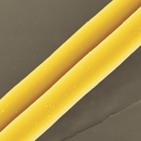Crossref Citations
This article has been cited by the following publications. This list is generated based on data provided by
Crossref.
Mammen, Lena
Papadopoulos, Periklis
Friedemann, Kathrin
Wanka, Stefanie
Crespy, Daniel
Vollmer, Doris
and
Butt, Hans-Jürgen
2013.
Transparent and airtight silica nano- and microchannels with uniform tubular cross-section.
Soft Matter,
Vol. 9,
Issue. 41,
p.
9824.
Wang, Yu
Guan, Juan
Hawkins, Nick
Porter, David
and
Shao, Zhengzhong
2014.
Understanding the variability of properties in Antheraea pernyi silk fibres.
Soft Matter,
Vol. 10,
Issue. 33,
p.
6321.
Mortimer, B.
and
Holland, C.
2015.
Advances in Silk Science and Technology.
p.
233.
Woods, A.
and
Holland, C.
2015.
Biomedical Textiles for Orthopaedic and Surgical Applications.
p.
1.
Laity, P.R.
Gilks, S.E.
and
Holland, C.
2015.
Rheological behaviour of native silk feedstocks.
Polymer,
Vol. 67,
Issue. ,
p.
28.
Kalinowski, Hypolito J.
Fabris, José Luís
Bock, Wojtek J.
Hey Tow, Kenny
Chow, Desmond M.
Vollrath, Fritz
Dicaire, Isabelle
Gheysens, Tom
and
Thévenaz, Luc
2015.
Spider silk: a novel optical fibre for biochemical sensing.
Vol. 9634,
Issue. ,
p.
96347D.
Blamires, Sean J.
Liao, Chen-Pan
Chang, Chung-Kai
Chuang, Yu-Chun
Wu, Chung-Lin
Blackledge, Todd A.
Sheu, Hwo-Shuenn
and
Tso, I-Min
2015.
Mechanical Performance of Spider Silk Is Robust to Nutrient-Mediated Changes in Protein Composition.
Biomacromolecules,
Vol. 16,
Issue. 4,
p.
1218.
Kurut, Anıl
Dicko, Cedric
and
Lund, Mikael
2015.
Dimerization of Terminal Domains in Spiders Silk Proteins Is Controlled by Electrostatic Anisotropy and Modulated by Hydrophobic Patches.
ACS Biomaterials Science & Engineering,
Vol. 1,
Issue. 6,
p.
363.
Offord, C.
Vollrath, F.
and
Holland, C.
2016.
Environmental effects on the construction and physical properties of Bombyx mori cocoons.
Journal of Materials Science,
Vol. 51,
Issue. 24,
p.
10863.
Kasoju, Naresh
Hawkins, Nicholas
Pop-Georgievski, Ognen
Kubies, Dana
and
Vollrath, Fritz
2016.
Silk fibroin gelation via non-solvent induced phase separation.
Biomaterials Science,
Vol. 4,
Issue. 3,
p.
460.
Lefèvre, Thierry
and
Auger, Michèle
2016.
Spider silk as a blueprint for greener materials: a review.
International Materials Reviews,
Vol. 61,
Issue. 2,
p.
127.
Laity, Peter
and
Holland, Chris
2016.
The Rheology behind Stress-Induced Solidification in Native Silk Feedstocks.
International Journal of Molecular Sciences,
Vol. 17,
Issue. 11,
p.
1812.
Laity, Peter R.
and
Holland, Chris
2016.
Native Silk Feedstock as a Model Biopolymer: A Rheological Perspective.
Biomacromolecules,
Vol. 17,
Issue. 8,
p.
2662.
Lefèvre, T.
and
Auger, M.
2016.
Spider silk inspired materials and sustainability: perspective.
Materials Technology,
p.
1.
Dicko, C.
Kasoju, N.
Hawkins, N.
and
Vollrath, F.
2016.
Differential scanning fluorimetry illuminates silk feedstock stability and processability.
Soft Matter,
Vol. 12,
Issue. 1,
p.
255.
Vollrath, Fritz
2016.
The complexity of silk under the spotlight of synthetic biology.
Biochemical Society Transactions,
Vol. 44,
Issue. 4,
p.
1151.
Zhang, Shichang
and
Tso, I-Min
2016.
Extracellular Composite Matrices in Arthropods.
p.
489.
Thomas, Sylvia W.
and
Alcantar, Norma A.
2017.
System integration of functionalized natural materials.
MRS Bulletin,
Vol. 42,
Issue. 05,
p.
343.
Lepore, Emiliano
Bosia, Federico
Bonaccorso, Francesco
Bruna, Matteo
Taioli, Simone
Garberoglio, Giovanni
Ferrari, Andrea C
and
Pugno, Nicola Maria
2017.
Spider silk reinforced by graphene or carbon nanotubes.
2D Materials,
Vol. 4,
Issue. 3,
p.
031013.
Philipp Seib, F.
2017.
Silk nanoparticles—an emerging anticancer nanomedicine.
AIMS Bioengineering,
Vol. 4,
Issue. 2,
p.
239.
